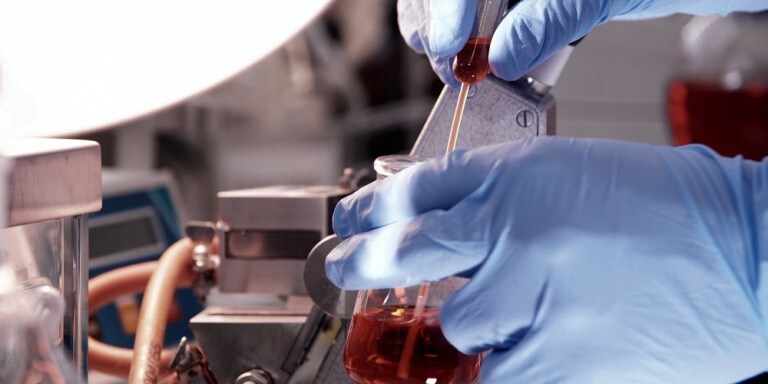
Health functions
Omega-6 and omega-3 fatty acids are important structural components of cell membranes, affecting fluidity, flexibility, permeability and the activity of membrane-bound enzymes (3). Read More

Fatty acids are natural components of fats and oils. Based on their chemical structure they can be differentiated into three groups: ‘saturated’, ‘mono-unsaturated’ and ‘poly-unsaturated’ fatty acids. Saturated fatty acids (fats) are mainly found in animal foods, such as (fatty) meat, lard, sausage, butter and cheese but even in palm kernel and coconut oil, which are used for frying. Most unsaturated fatty acids (fats) are of plant and fatty fish origin. Foods containing unsaturated fatty acids include avocado, nuts, vegetable oils (corn, soy, and algal-oil), herring, and salmon. Meat products contain both saturated and unsaturated fats.
Of particular interest are ‘polyunsaturated fatty acids’. Within the family of polyunsaturated fatty acids (PUFAs), there are two different groups: the ‘omega-3-fatty acids ‘and ‘omega-6-fatty acids’ (1). Both are considered essential fatty acids because they cannot be synthesized by humans.
The parent fatty acid of the omega-3 series is alpha-linolenic acid (ALA). The omega-3 long-chain polyunsaturated fatty acids, eicosapentaenoic acid (EPA) and docosahexaenoic acid (DHA), can be synthesized from ALA, although conversion rates are very low, especially for DHA. DHA status is not only influenced by diet but also by genetic variants, single nucleotide polymorphisms in the fatty acid desaturases (229).
The parent fatty acid of the omega-6 series is linoleic acid (LA). The omega-6 long-chain polyunsaturated fatty acid, arachidonic acid (AA), can be synthesized from LA.
Long chain polyunsaturated fatty acids (LC-PUFAs) possess a chain of 20 or more carbon molecules. The LC-PUFA of the omega-3 and omega-6 fatty acid families are considered as conditionally essential fatty acids if the endogenous production from the parent fatty acids is inefficient and insufficient to meet nutritional requirements.
It has been estimated that the ratio of omega-6 to omega-3 fatty acids in the typical Western diet is almost 10:1 due to increased use of vegetable oils rich in omega-6 fatty acids as well as reduced fish consumption (2). A large body of scientific research suggests that increasing the relative abundance of dietary omega-3 LC-PUFAs (EPA, DHA) have a number of health benefits. However, the intake of omega-3 LC-PUFA is low and largely below recommended dietary intake. A worldwide review of nutritional surveys showed that only 45 (representing only 18.9% of the world population) of 266 countries achieved a recommended intake of ≥ 250 mg/d (304).
Authored by Dr. Peter Engel in 2010 and revised by Dr. D. Raederstorff on 03.05.17

Omega-6 and omega-3 fatty acids are important structural components of cell membranes, affecting fluidity, flexibility, permeability and the activity of membrane-bound enzymes (3). Read More

There is more and more data showing that increased consumption of long-chain omega-3 fatty acids – namely eicosapentaenoic acid (EPA) and docosahexaenoic acid (DHA) – can result in a reduced incidence of cardiovascular disease. Read More
Things to know about Essential Fatty Acids
The recommended dietary allowance (RDA) of essential fatty acids is dependent on age, gender, and other factors. Read More
Surveys in several European countries reported average intakes of total polyunsaturated fatty acids (PUFA) ranging from 3 –7% of the total daily energy intake (206). Read More
In male myocardial infarction (MI) survivors who were advised to increase their weekly intake of oily fish to 200–400 g (an amount estimated to provide an additional 500–800 mg/day of the long-chain omega-3 fatty acids EPA and DHA), total mortality and deadly (‘fatal’) MI decreased by 29% (114). Read More
Symptoms of essential fatty acid deficiency include scaly rash, decreased juvenile growth, increased susceptibility to infection, and poor wound healing. Read More